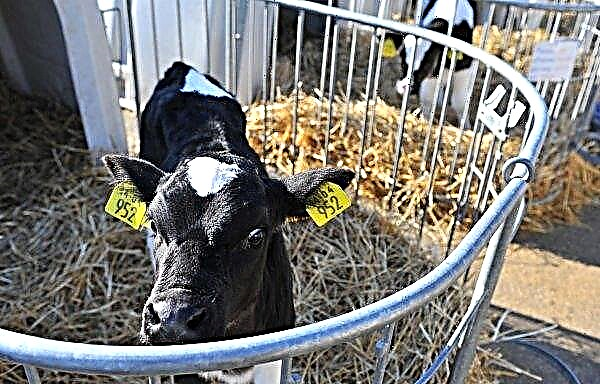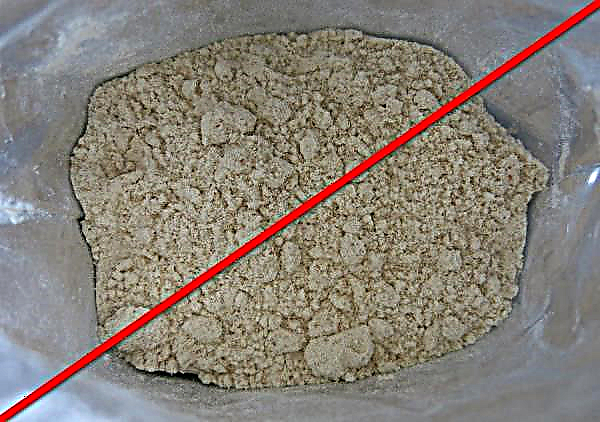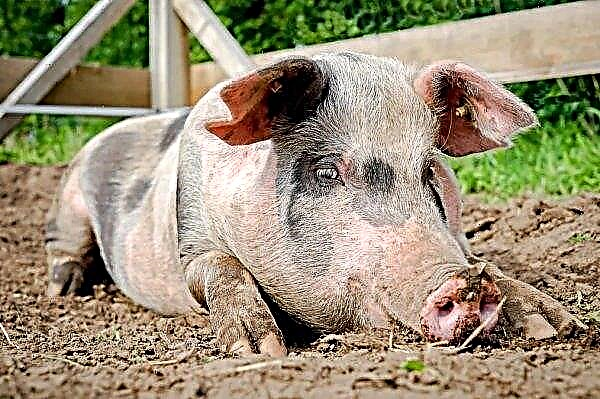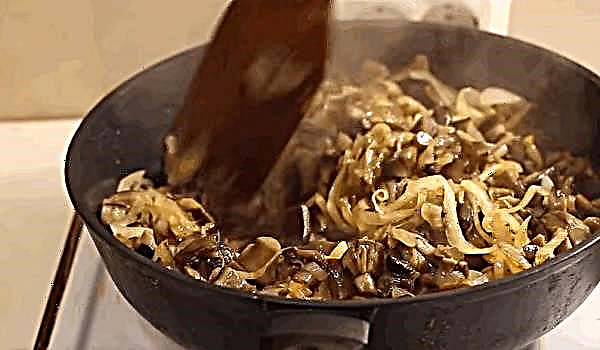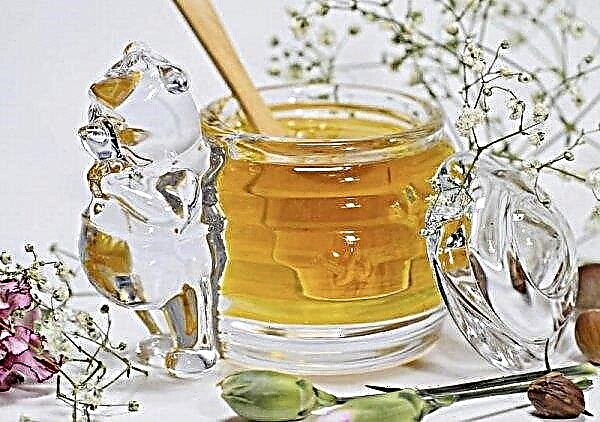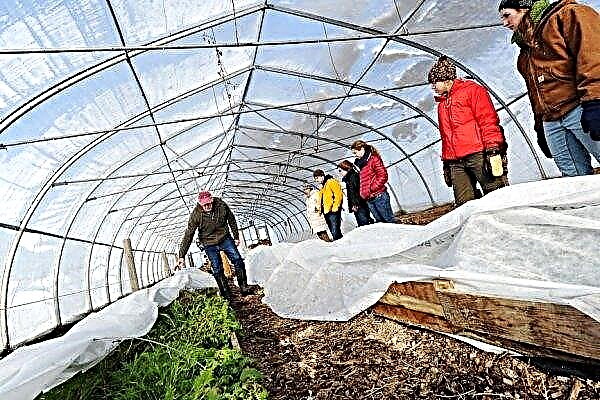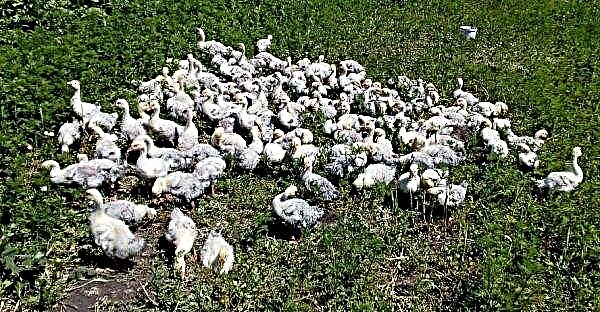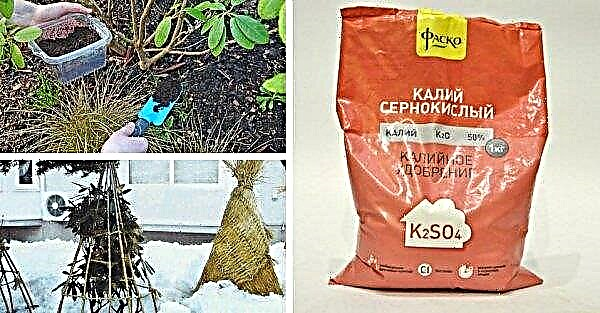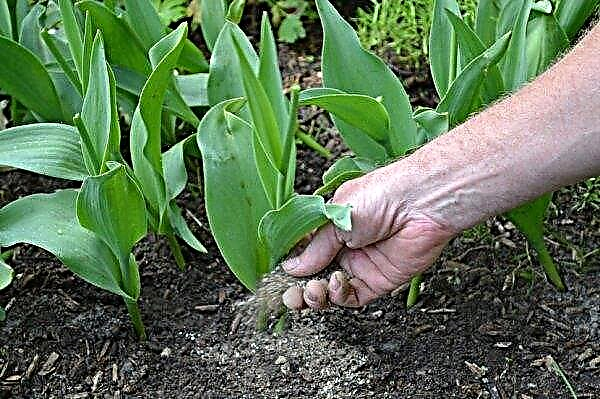In our forests, the range of mushrooms is very wide. There are species that everyone knows, for example, boletus, butterdish, boletus, and there are those that are known only to professionals of the “silent hunt”. It is to the latter that the mushroom euphorbia belongs.
Mushroom description
This species is known in the literature and among the people also under other names:
- the milkman is the best;
- sub-milkman;
- lump red-brown;
- Gladysh;
- subdue;
- undergrowth;
- rubella.
 Euphorbia fungus (Lactarius volemus) belongs to the family of syroezhkov, the genus Mlechnik.
Euphorbia fungus (Lactarius volemus) belongs to the family of syroezhkov, the genus Mlechnik.
Few people put this representative of the mushroom kingdom into their basket, because it is not as well known as, for example, a black breast or yellow rowan. But true connoisseurs of the unique taste of thresher walk tens of kilometers to find it. Not to confuse euphorbia with other relatives allows a detailed description and special characteristics of this species, and there are many of them.
What does it look like
Euphorbia mushroom is notable for its considerable size.. Its hat in diameter reaches 15 cm, in rare cases - 20 cm, fleshy, in the early stages - convex, slightly concave in the middle with the edges bent to the leg. Over time, it acquires an open or funnel-shaped form.
Did you know? In Italy, euphorbia is considered the most valuable mushroom. Sauces from it are served in the most expensive restaurants for a lot of money.
The skin is dry to the touch, velvety, often cracking due to age and lack of moisture. The surface is matte, brown-red, red, red-yellow or light orange in color, without concentric circles. The center of the hat is always darker than the edge.
The foot of the sub-milkman is thick, reaches 4 cm in diameter and from 4 cm to 12 cm in height, has the shape of a cylinder, even or slightly widened in the middle. In young mushrooms, it is dense, with age it becomes hollow, tubular. The surface of the legs is velvety, smooth, pleasant to the touch. The color is the same as the hat, or slightly lighter, which is more common.
The pulp is dense, but brittle, white in color, on faults it darkens when weathered. It has a sweet taste. Older mushrooms have a distinct smell of herring, crabs or sunflower. In case of damage from both the cap and the leg, milky juice with a sweetish or resinous-bitter taste is liberated.
Upon contact with air, the milk darkens to brown and changes the consistency, becoming caramel-malleable. Milkweed records are white with a yellowish or pinkish tint; they darken with age. They are often located, have a straight or thymus shape, slightly descend along the leg.
Where is growing
Sub-milk grows alone, less often - in small groups in the southern, central and eastern regions of Europe and Asia in remote, inaccessible places of deciduous and coniferous forests. Prefers wet terrain with mosses and rotten stumps.. With nut, oak and spruce forms mycorrhiza - a common root system. The "hunt" for this mushroom begins in mid-July and ends in October.
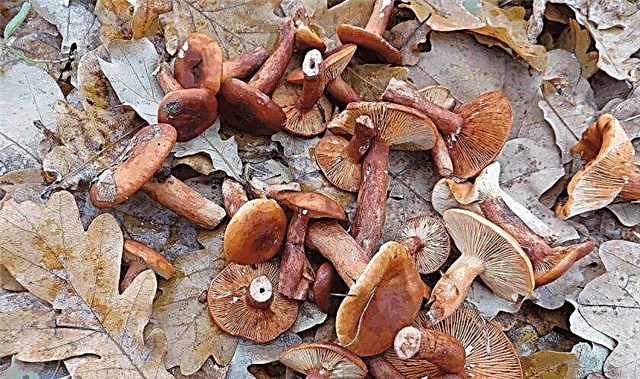
Edible or not
Euphorbia is not only edible, but also very useful.due to which it is widely used both in cooking and in traditional medicine. In addition, this is the only mushroom of its kind, the milky juice of which has a sweetish taste and is not at all bitter, which allows it to be consumed without preliminary soaking.
Varieties and doubles
The red-brown lump experienced mushroom picker never confuses with anything else, but novice lovers of a quiet hunt can still take for him some other relatives:
Growing
Euphorbia mushroom can be grown at home under any tree species, but walnut stands give maximum germination and yield. Moreover, such a neighborhood significantly increases the fruiting of crops due to the formation of mycorrhiza.
Milk spores can be purchased at the store and sown, according to the instructions:
- Mix 15 g of seeds with 0.5 l of sand or dry soil (per 1 m²).
- Fluff up the ground under a tree, reaching the roots, to a depth of 5-15 cm.
- Distribute mycelium over the area.
- Cover with garden, and preferably forest soil, mixed in equal proportions with humus.
- Pour from a watering can with a fine spray 10 l of water per m².
- From above, mulch with earth and sawdust.
Did you know? Almost two-thirds of the mushrooms sold on the world market, artificially grown in China.
You can get seed yourself. To do this, find the old mushrooms, without washing, grind in a meat grinder, add water and insist in a dark, warm place for 2 weeks. After the lapse of time, the cake from above must be removed, and the remaining liquid will be a solution of milkweed spores.
Further, everything is done in the same way as with the purchased material, only the mycelium will be distributed over the area not in dry form, but by irrigation. Harvest of red-brown lumps can be expected in three months, further fruiting, subject to proper watering, will continue until the end of October.

Mushroom benefits
- Red-brown breast is characterized by a rich chemical composition, which includes:
- volmerolide or fungal estrogen;
- sugar alcohol;
- vollemitol;
- ethanol extract;
- sterol;
- cortisone;
- alimentary fiber;
- ash;
- vitamins B9, B6, B2, D, PP, E;
- trace elements: chromium, rubidium, cobalt, iron, fluorine and selenium, potassium, phosphorus, magnesium, calcium and sodium;
- beneficial acids: tyrosine, valine, lysine, threonine.
All these enzymes, vitamins and minerals make it possible to use the fungus for the prevention and control of various diseases.
Cooking Application
For culinary purposes, it is better to use young mushrooms, since the older the mushroom, the more expressive is the specific smell, which is also enhanced during the preparation process.

Euphorbia belongs to the fourth taste category, therefore, they are not recommended to cook and fryalthough some mushroom pickers speak of fried rootwort as a unique delicacy. Preservation of the maximum benefit of mushrooms and get a wonderful crispy snack for the whole winter allows salting in a cold way.
Important! The red-brown breast is never affected by worms and insects. It does not need to be soaked before cooking.
The recipe is extremely simple:
- Rinse the mushrooms under running water.
- Separate the legs from the hats - so they will lie down compactly and correctly.
- Lay the breasts in layers in a wooden, ceramic or enameled container, pouring coarse salt at the rate of 50 g of salt per 1 kg of mushrooms.
- Cover with gauze in 3-4 layers, put a wooden circle on top, suitable for the inner diameter of the container (you can use a plate or an enamel lid).
- Place a pot or barrel in a cold salting place for 1 month. During this time, the circle and gauze will need to be washed daily.
- A month has passed - take out the mushrooms and enjoy the unique taste.
Medical use
Euphorbia mushroom has a large number of beneficial properties, due to which it is widely used in traditional medicine. The most valuable is the milky juice, which has a powerful antitumor effect.
 Fresh mushrooms contain ethanol extract, which is often used in the fight against various malignant tumors, including cancer. The presence of cortisone in the composition of the tissues allows you to use it as part of a means to combat inflammation and rheumatism.
Fresh mushrooms contain ethanol extract, which is often used in the fight against various malignant tumors, including cancer. The presence of cortisone in the composition of the tissues allows you to use it as part of a means to combat inflammation and rheumatism.
Tincture of milkworm take 1 tsp. 3 times a day for varicose veins, hemorrhoids, gout, otitis media, bronchitis, fever, sore throat, gastrointestinal diseases and inflammatory processes.
With a runny nose, the nasal mucosa is lubricated with an oil composition. External use of tincture helps to solve skin inflammation problems, cure burns, allergic rashes and more.
- In addition, the red-brown breast performs a number of other functions:
- blocks distribution and removes bad cholesterol;
- has an antioxidant effect;
- helps in the restoration of the microflora of the digestive tract;
- Helps replenish protein and protein with a healthy diet.
Milk mushroom tincture recipe for butter
To prepare milkweed tincture in oil, mushrooms must first be dried. To do this, they are cut into plates 1 cm thick and hung in shaded, well-blown places. You can also use an electric dryer.
Important! Before use, tincture should be thoroughly shaken until smooth.
After the raw materials have completely dried, they grind it with a coffee grinder or a blender into powder and pour linseed or olive oil at the rate of 0.5 l of oil per 3 tbsp. mushroom powder. The container is tightly closed and left to infuse in a warm dark place for two weeks. Filter the composition is not necessary. It can be stored in the refrigerator for several years.
What is the danger of the fungus
The rich chemical composition not only helps to fight diseases, but is the reason for the presence of a number of contraindications and warnings regarding its use. Euphorbia mushroom should not be used by pregnant women, children under 7 years old, mothers who are breast-feeding.

- In case of intolerance to one or more components of the fungus, side effects may occur:
- itchy skin;
- atopic dermatitis;
- gastrointestinal upset;
- allergic rhinitis or SARS;
- a sharp increase in temperature;
- headache;
- cough, shortness of breath.
People suffering from kidney diseases, cholelithiasis, gastritis and gastric ulcer in acute form should take milk-based medications with extreme caution. Hypertensive patients are not recommended to use more than 1 hour infusion per day. The fungus has an exciting effect on the nervous system, so it should not be eaten in any form later than three hours before bedtime.
The red-brown breast is a tasty and healthy product, but it is extremely difficult to find it. Often, in search of several mushrooms, you have to go tens of kilometers through marshy areas, however, believe me, they are worth these efforts.

